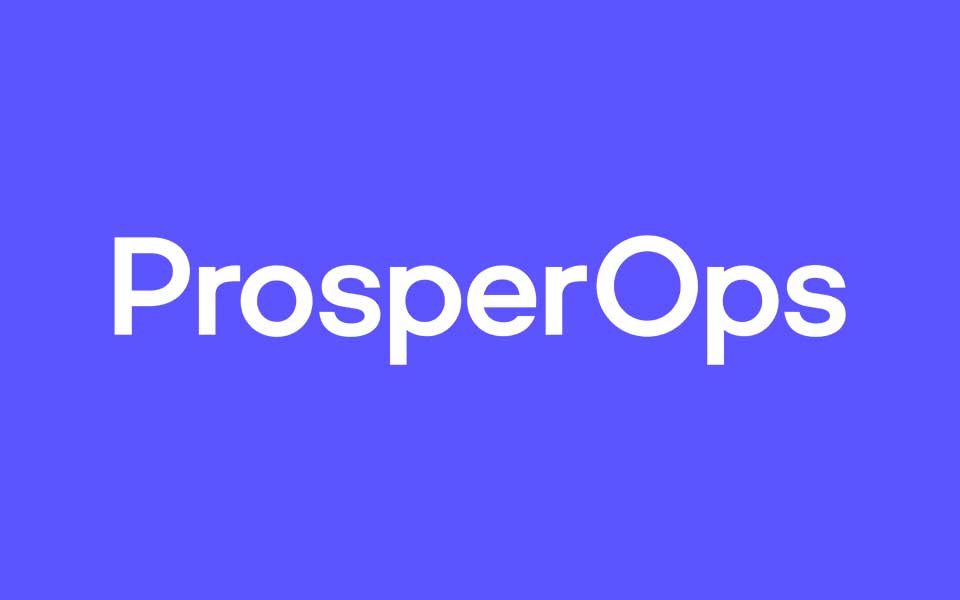Our blog is primarily a vehicle to speak about cloud cost optimization, but occasionally we’ll diverge into our experience as a startup. Your mileage may vary, but here is our experience.
We decided to start writing posts that captured our experience setting up the business infrastructure for ProsperOps. The goal was to make it brief, actionable content that other startups at a similar stage may find useful. Today we’re talking about the process to name the company. I’ll keep my comments focused on the principles we used to align on the right name and the tools we used to secure it.
Our first step in the naming process was to really understand the ideas we wanted to convey in the name and ultimately the brand. Our thinking was that the right name would not only contribute to helping us position for a new category that we could own, but also differentiate us from other solutions that may be mistaken as competitive. We also didn’t want a name that was so specific to our offering that it prevented us from exploring other adjacent problem sets in the future.
Using that criteria, we tried to focus on ideas that spoke to the outcome we wanted for customers. In addition, we saw many parallels between our mission to optimize cloud savings with what robo-advisors, like Betterment and Wealthfront, had done to optimize personal investing. Since our value proposition was about helping businesses save money, we knew we would lean into financial terms and analogies to position our offering away from reporting tools and AI cloud automation. With that in mind, we wrote the following ideas:
Prosperous, Savings, Optimization, Automated/Autonomous, Action-oriented, Hands-free, Simple, Peace of Mind, Success-based, Win-win pricing
The next step was primarily about finding a name with attributes that would help marketability:
- Easy to say
- Easy to spell (we felt like purposefully misspelling a word in the name would impact the brand, so that was off the table)
- Ownership of the ‘.com’ domain (we felt the ‘.com’ was an important signal to established B2Bs that may hesitate with trendier ‘.io’ or ‘.ai’ domains that say “startups selling to startups”)
- A domain name that was just the company name and not a modification that may complicate organic search (e.g., www.get’X’.com or www.’X’HQ.com)
- Visually interesting word and letter combinations
Our initial focus was the abstract one word name (e.g., Stripe, Slack, Zoom, etc.). We used tools like Google Domains and Domainr to determine ownership. As we went through our list of ~20 options, we quickly realized that virtually every one word .com domain, and I am talking about some random, esoteric single words, is owned and/or prohibitively expensive. Instead, we opted for a combo word name, since there were many examples of modern B2B tech companies with this naming convention (e.g., Dropbox, MailChimp, DocuSign) and we could meet our criteria with no/low money out of pocket.
We used Lean Domain Search and Shopify’s domain name generator to help brainstorm different combination options. We settled on CloudProsper, even though it had some rough edges, and used that name during our early customer validation meetings, incorporation, and during our raise. ‘Cloud’ gave prospects a sense of the zipcode we operated in, ‘Prosper’ is the outcome we sought for customers, and the name was broad enough to not lock us into one type of offering.
However, as time went on, something kept bugging us about ‘cloud’. ‘Cloud’ names were already common and feeling tired the way ‘e-‘ or ‘.com’ was overused in 2000. To make things worse, there were a metric ton of cloud management platforms that used ‘cloud’ in their name (we lovingly called them ‘the CloudX companies’) and while both of our solutions help cloud users, our approaches couldn’t be more different. From our initial customer validation meetings, it became clear that we didn’t want to signal anything to prospects that would immediately dismiss us for being the same as others in that population.
So, within a couple of months of incorporation, we changed our name to ProsperOps. Tactically, we had to file legal changes with the IRS, a Certificate of Amendment with Delaware, Amendment to Registration with Texas, and then update our various accounts.
Here was our rationale for the switch to ProsperOps:
- Easy to say
- Easy to spell
- Looks good written out with many repeating and rounded letters
- The .com (and Facebook) were available
- ‘Prosper’ continues to convey the outcome we want for customers without getting too specific on the product that delivers it
- ‘Ops’ conveys an ongoing service and active orientation (vs the passive cloud reporting tools)
- ‘DevOps’ is the name of our buyer population and ‘FinOps’ is a rising term that, along with DevOps, is critical in the cloud cost optimization lifecycle
We are really happy with how things turned out. I hope some of these criteria are valuable if you find yourself in a similar situation.




